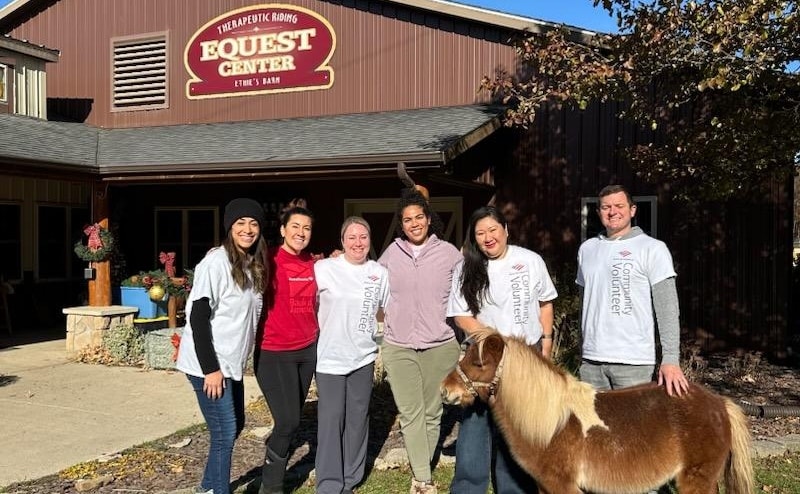A combination of things: Mixed-use buildings grow Grand Rapids
Will mixed-use buildings create economic success in Grand Rapids? The answer is complicated, and requires sound public policy, mindful of economic impact.
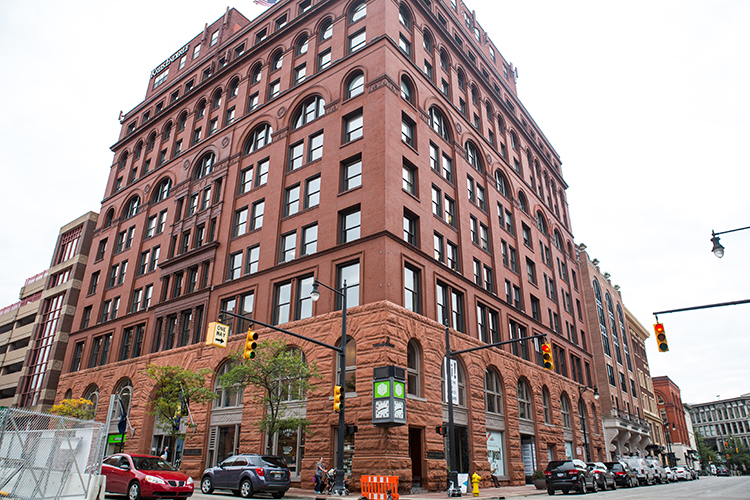
Mixed-use buildings have been around as long as cities. In the United States, they were the norm until the automobile came along, people moved away from the urban core, and the morning commute was born. Modern zoning ordinances and land-use practices also put a damper on the concept as municipalities began designating parcels of land as either residential or commercial. Through the first half of the 20th century, the mixed-use building model dwindled. Until the 70s, when cities and private developers looking to revitalize their downtowns, gave them another look.
Grand Rapids was no stranger to this trend. Managing partner for CWD Real Estate, Sam Cummings, has been involved in many of Grand Rapids’ mixed-use building projects. Some of the more recent include the Ledyard Building, 80 Ottawa, Michigan Trust Building, 40 Pearl, The Rowe and, in process, 50 Monroe and 37 Ottawa.
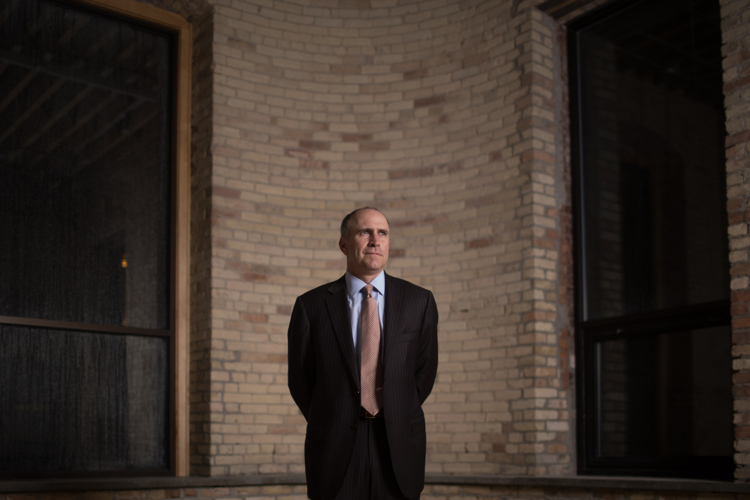
“Real estate is a tool. Mixed-use building is a design for a specific tool. There are some areas where it doesn’t make sense, some where it does,” he says. “Typically, it works well where there is a denser population or property values are a little higher. If there is a significant part of the demographic to support retail function, then it makes sense.”
Mixed-use as affordable housing
Another function of mixed-use buildings in core cities has been to provide affordable housing. In the 80s, Dwelling Place Inc. began transforming Grand Rapids’ Heartside District using the model. At that time, most of the buildings in Heartside were boarded up, vacant, or underutilized. Many of the historic buildings that now give the district its architecturally rich flavor were then ripe for demolition.
Dennis Sturtevant, Dwelling Place CEO, recalls when a fire in the pawn shop occupying 136 and 138 Division gutted the century-old structure. Instead of tearing it down, the City donated it to Dwelling Place. Today, it houses the affordable Chaffee Apartments. To qualify for the one-bedroom apartments, residents must earn at least two times the monthly rent of $712 but not more than 60% of the area median income.
“When we are doing apartments, we have always had to ask the question ‘What do we want to do with the first floor?’ When we began in 1980, there was no opportunity for retail or office,” he says. “Heartside was a no-man’s land. Our commercial spaces [were] often leased to nonprofits providing social services. That’s how we addressed the question back then.”
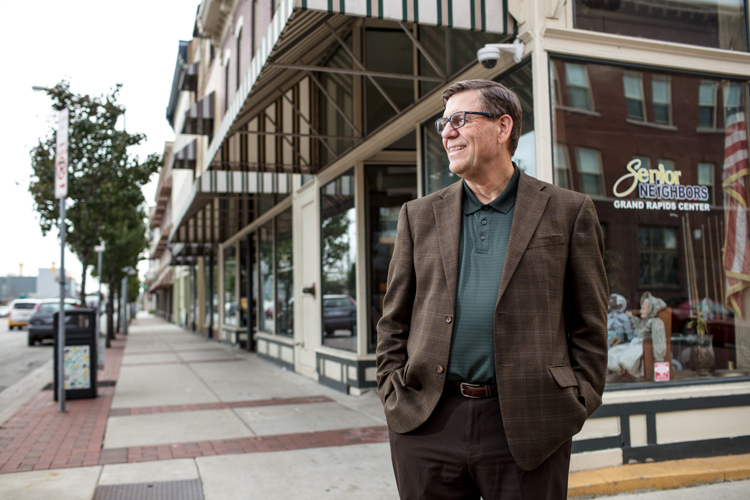
In the 90s, mixed-use projects began to emerge across the country’s larger cities as hallmarks of sustainable design and walkable communities, with residential spaces becoming a major part of the mix. The strategy behind the trend was that people living in them would enjoy more social connectivity, have easier access to downtown institutions and entertainment, and, if they worked downtown, no more morning commute. Having more people living in the urban core could also support a better urban transit system and help decrease urban sprawl.
As the Grand Rapids market improved, Dwelling Place began employing this strategy with different tactics for using these commercial spaces. Because the retail market was somewhat soft, they transformed some into live-work spaces where business owners could not only live and create their products but also retail them. Dwelling Place engaged a consultant from Artspace in Minneapolis, Minnesota to assess the Heartside neighborhood. Could an arts community thrive there if affordable live-work spaces came on the real estate market? The answer was “yes.” Hence, Grand Rapids’ Avenue of the Arts got its start.
“We found a market that had not been penetrated,” Sturtevant says. “We began putting together financing and began converting some commercial spaces, over time, to live/work spaces that provide maximum flexibility.”
Over the years, Dwelling Place has leased space to Calvin College, Grand Valley State University, the Kent County Land Bank, Heartside Ministries, and many other for-profit and nonprofit entities. God’s Kitchen has been a client for more than 30 years. In the various buildings, spaces above the first floor are reserved for rent- and income-restricted, affordable housing for families and individuals earning less than 80% of area median income. Some buildings are targeted to artists. Others offer homes to the homeless, disabled, and elders. Others are simply for people with income challenges.
“We service a lot of different kinds of people, from a lot of different backgrounds, with a lot of different incomes,” Sturtevant says.
The Dwelling Place model—renovating buildings into mixed use spaces offering affordable housing—has proven a success. Its team has replicated what started in one Grand Rapids neighborhood in seven other communities across four counties. One of its newest developments on Grand Rapids’ West Side addresses the gentrification happening there by replacing some of the affordable housing that has been lost.
“It’s worked out very well,” Sturtevant says. “Other communities have asked us to bring our magic to their neighborhoods to address affordable housing needs: Holland, Muskegon Heights, Rockford, Hesperia, Kentwood, and Wyoming. Our footprint and impact is much bigger today in terms of all the different ways we get involved in neighborhood and communities.”
Dwelling Place has plans for another step forward in developing affordable housing downtown—lans for converting some of its rental housing into shared equity co-ops. This will enable renters to become homeowners, beginning with residents of the Martineau Apartments, 106 South Division Avenue. Buyers will be required to earn less than 80 percent of the median income and be able to purchase their unit below its appraised value. Restrictions on resale will ensure owners don’t buy simply to sell for a profit. “It works really well in neighborhoods with appreciation going on, but not in a market where it’s going down,” Sturtevant says.
Mixed incomes required to sustain mixed-use neighborhoods
In Grand Rapids, many challenges remain. While mixed-use buildings have been successful in developing many properties, a successful mixed-use landscape requires a combination of uses. Thanks to programs like Dwelling Place, the City’s core now has more low-income housing.
In order to create a successful commercial landscape, Cummings says that housing is needed to attract more residents who have economic means to frequent the businesses. In development terms, for mixed-use developments to work, retail locations need to be supported by density.
Cummings notes that residential spaces in mixed-use buildings downtown offer all the benefits of living in the core city: walkability, easy access to nightlife and cultural activities, and amenities offered by the buildings where they live. However, the long-term goal needs to be establishing a sustainable retail presence there.
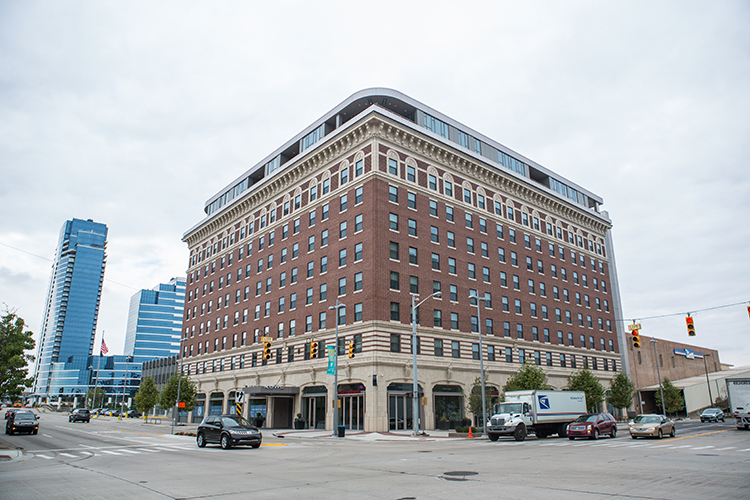
“From a residential perspective, it works great. The residential density and demographic growth in incomes and education that support ground floor usage has improved,” he says. “We have been doing good work as a city for quite some time, but, we can’t take that growth for granted. We still are not there. We are in an extraordinary position relative to where we were when I started 25 years ago, but we’ve got to keep going.”
Cummings says that the cities Grand Rapids emulates have economically sustainable downtown retail sectors that are markets unto themselves. Here, a regional retail market pulls dollars away from the core city.
“Our mixed use buildings are really cool. We just need to make sure that they can be economically sustainable. All of our successful buildings are a manifestation of the culture behind them, an incredibly philanthropic and partnering community,” he says. “It’s incredibly important that we maintain that and continue to enhance and innovate our center city as the place to live, work, and be entertained. This can make a pretty compelling environment for a sustainable web of mixed-use buildings.”
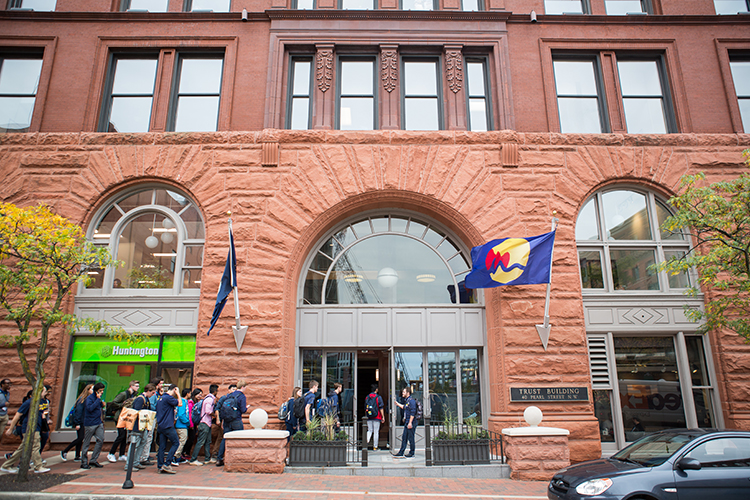
Will mixed-use buildings create economic success in Grand Rapids? Sturtevant believes that answer is complicated. It requires sound public policy, mindful of economic impact.
“If Grand Rapids’ neighborhoods are gentrified, where are the people who live there going? To less expensive neighborhoods in the suburbs. The impact is progressive,” Sturtevant adds. “This is why the best thing we can do is think regionally, working with multiple cities and counties, asking these questions. If you look across the US at efforts like this, others are doing a better job. The City of Grand Rapids is trying to do something, but to be successful, it’s got to be a regional effort.”
“Constructing the future” is a new 12-part series from Rapid Growth that will explore issues facing, and related to, West Michigan’s construction industry and the numerous organizations, trends, and innovations seeking to create positive advances in our community. The series is sponsored by Triangle Associates, a West Michigan-based construction company that provides construction management, design/build services, general contracting, integrated project delivery, and more to projects locally and across the country.
A working writer since 1992, Estelle Slootmaker is happiest writing about social justice, wellness and the arts. She also writes poetry. (One of her poems has been published in the new book, Grand Rapids Grassroots: An Anthology). Stelle serves as communications manager for Our Kitchen Table and chairs the City of Wyoming Tree Commission (The Tree Amigos). As a child, she spent many a Saturday at the old Museum—and often took her children there before the building closed. You can contact Stelle at stellecheck@msn.com or via her website, www.constellations.biz.
Photos by Adam Bird of Bird + Bird Studio.

